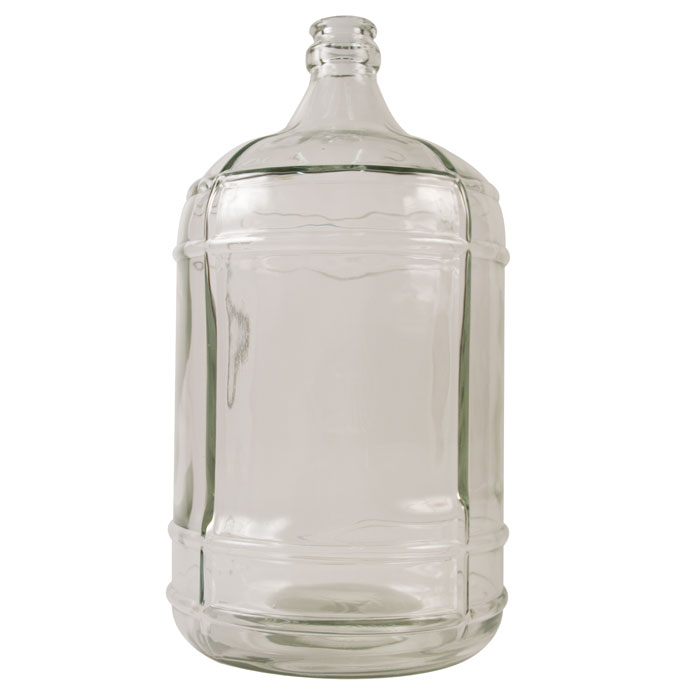A carboy is a container, typically made of glass or plastic, used for storing and transporting liquids. These versatile containers find applications in various industries, including food and beverage, chemical, and pharmaceutical.
Carboys come in different sizes and shapes, with capacities ranging from a few gallons to several hundred gallons. They are often equipped with handles or grips for easy handling and transportation.
Container Description
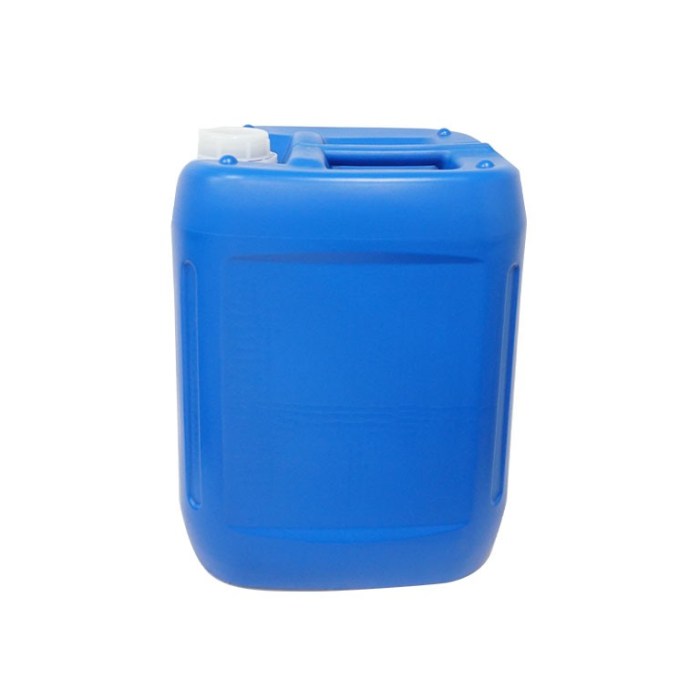
A carboy is a large, sturdy container typically used to store and transport liquids. It is characterized by its cylindrical shape, wide mouth, and narrow neck. Carboys are commonly made from various materials such as glass, plastic, and stainless steel, each offering distinct advantages and disadvantages.
Materials Used
Glass:Glass carboys are known for their inertness, making them suitable for storing liquids that may react with other materials. They are also transparent, allowing for easy visual inspection of the contents. However, glass carboys are heavy and fragile, requiring careful handling to prevent breakage.
Plastic:Plastic carboys are lightweight, durable, and less expensive than glass carboys. They are also more resistant to breakage, making them suitable for rough handling. However, some plastics may leach chemicals into the liquid, and they can be susceptible to discoloration over time.
Stainless Steel:Stainless steel carboys offer excellent durability and resistance to corrosion. They are also easy to clean and sanitize, making them ideal for storing liquids that require high levels of hygiene. However, stainless steel carboys are more expensive than glass or plastic counterparts.
Types of Carboys
Narrow-Neck Carboys:These carboys have a narrow opening at the top, making them suitable for pouring liquids without spillage. They are often used for storing and dispensing liquids in laboratories and industrial settings.
Wide-Neck Carboys:Wide-neck carboys have a wider opening at the top, allowing for easy access to the contents. They are commonly used for storing and transporting large quantities of liquids, such as wine or beer.
Fermentation Carboys:These carboys are specifically designed for the fermentation process. They feature a fermentation lock or airlock to allow carbon dioxide to escape while preventing oxygen from entering.
Purpose and Uses
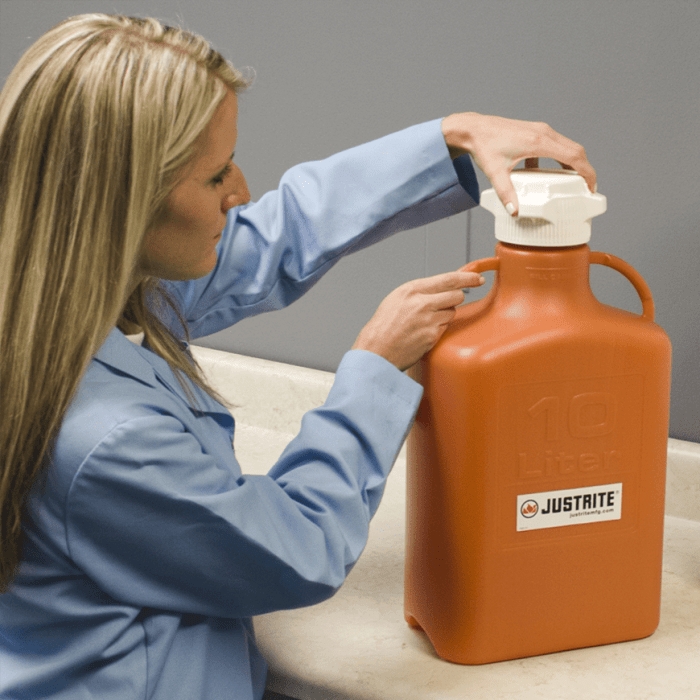
Carboys, ubiquitous containers in the realm of liquids, serve a pivotal role in diverse industries. Their primary purpose lies in the safe and efficient storage, transportation, and dispensing of liquids.
These versatile vessels find applications in a multitude of settings, ranging from the pharmaceutical and chemical industries to food and beverage production. They are employed in laboratories for the preparation and storage of solutions, reagents, and cultures.
In the Pharmaceutical Industry
Within the pharmaceutical industry, carboys are indispensable for the storage and transportation of sterile liquids used in the production of medicines. They ensure the integrity and purity of these critical components, preventing contamination and maintaining the efficacy of the final products.
In the Chemical Industry
In the chemical industry, carboys play a crucial role in the handling and storage of hazardous and corrosive liquids. Their robust construction and leak-proof design make them ideal for safely storing and transporting these substances, minimizing the risk of spills and accidents.
In the Food and Beverage Industry
The food and beverage industry relies heavily on carboys for the storage and transportation of liquids such as wine, beer, and fruit juices. They provide a sanitary and inert environment, preserving the taste, aroma, and quality of these beverages throughout the production and distribution process.
Handling and Storage: A Carboy Is A Container
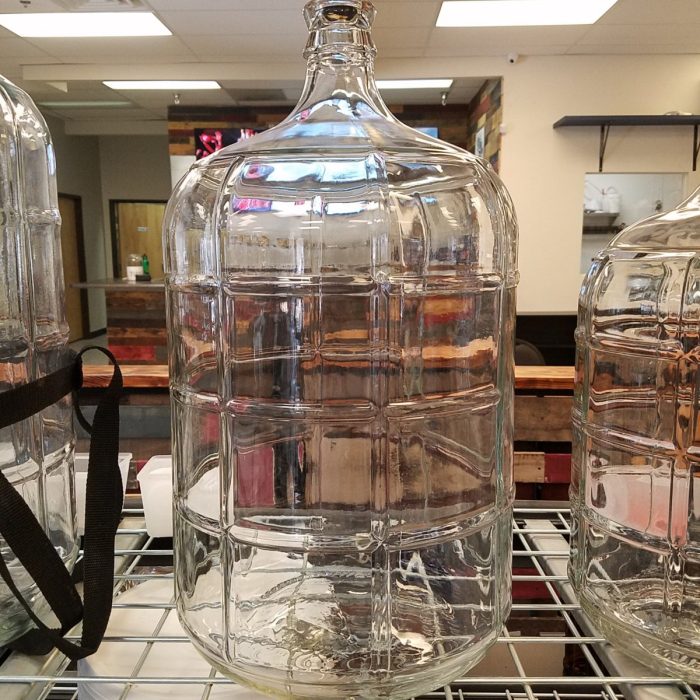
Carboys are fragile and require careful handling and storage to ensure their longevity and prevent accidents.
Proper transportation techniques, such as using secure straps or dollies, are essential to prevent breakage during movement.
Transportation, A carboy is a container
- Use sturdy straps or a dolly to transport carboys.
- Secure the carboy upright to prevent rolling or shifting.
- Avoid sudden movements or jolts.
Storage
Store carboys in a cool, dry place away from direct sunlight or heat sources.
Keep them upright on a stable surface to prevent tipping or breakage.
- Avoid storing carboys near sharp objects or corrosive chemicals.
- Inspect carboys regularly for any cracks or damage.
- Replace damaged carboys promptly.
Advantages and Disadvantages
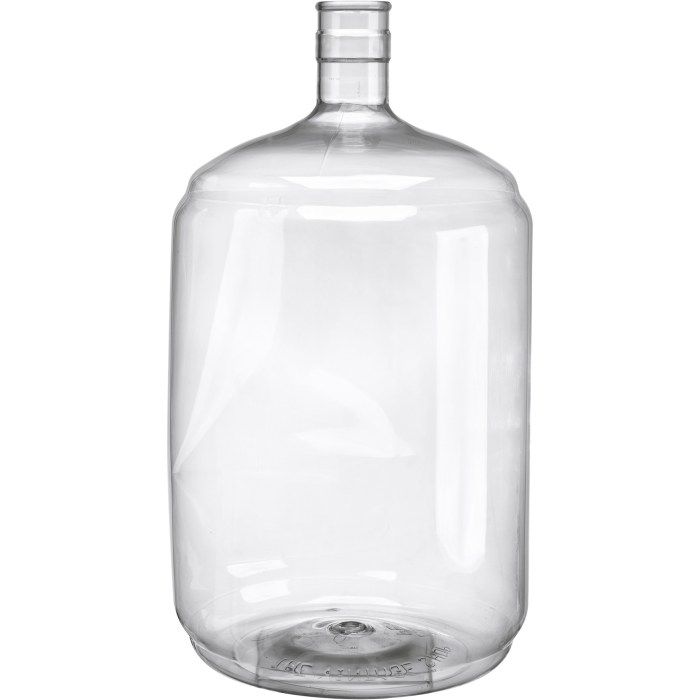
Carboys, due to their unique characteristics, offer both advantages and disadvantages. Here’s a comprehensive table comparing their benefits and drawbacks:
| Advantages | Disadvantages |
|---|---|
| Durable and long-lasting | Heavy and difficult to move when filled |
| Chemically inert, suitable for storing various liquids | Fragile and susceptible to breakage |
| Transparent, allowing for easy monitoring of contents | Can be difficult to clean thoroughly |
| Relatively inexpensive | May not be suitable for storing liquids under pressure |
Benefits of Carboys over Other Containers:Compared to other containers, carboys provide several advantages:
-
-*Durability
A carboy, a type of container, can hold various liquids. Speaking of meals, have you heard about the uncw meal plan sign up ? It’s an excellent option for students who want to enjoy convenient and affordable dining on campus.
Returning to our topic of containers, carboys are often used for transporting and storing liquids, making them a versatile and practical choice.
Carboys are constructed from durable materials like glass or plastic, making them resistant to wear and tear.
-*Chemical Inertness
They are chemically inert, meaning they do not react with the contents they store, preserving the integrity of the liquid.
-*Transparency
The transparency of carboys allows for easy visual inspection of the contents, enabling quick identification of any changes or contaminants.
-*Cost-Effectiveness
Carboys are relatively inexpensive, making them a budget-friendly option for storage.
Potential Drawbacks or Limitations:Despite their advantages, carboys also have some potential drawbacks:
-
-*Weight
When filled, carboys can become heavy and difficult to handle, especially for larger sizes.
-*Fragility
Carboys can be fragile and prone to breakage, requiring careful handling to prevent accidents.
-*Cleaning
Thoroughly cleaning carboys can be challenging due to their shape and size.
-*Pressure Limitations
Carboys may not be suitable for storing liquids under high pressure, as they could potentially rupture or leak.
Industry Standards and Regulations
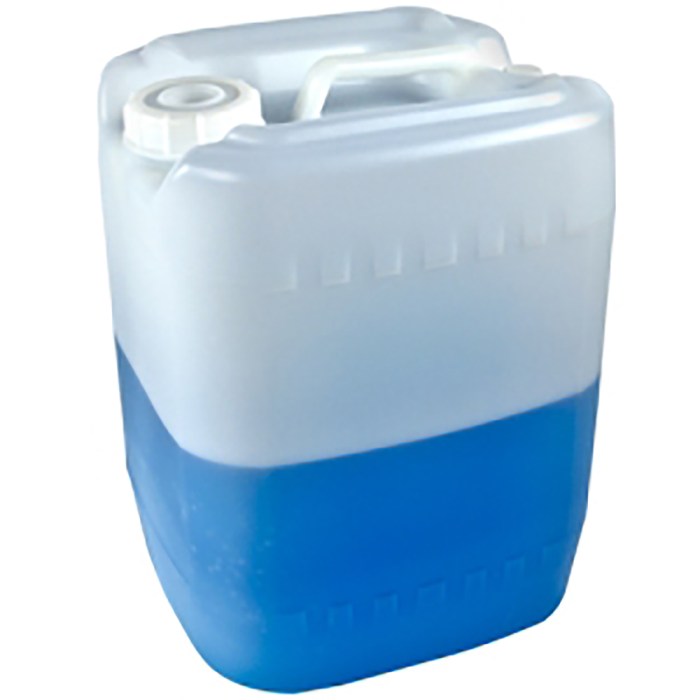
The use of carboys in various industries is governed by specific standards and regulations to ensure safety and compliance. Adhering to these guidelines is crucial for responsible handling and storage practices.
These standards and regulations address aspects such as:
- Material Specifications:Defining the acceptable materials for carboy construction, ensuring their compatibility with the stored substances.
- Capacity and Labeling:Specifying maximum capacities and proper labeling requirements for carboys, providing clear identification and minimizing handling risks.
- Transportation and Storage:Establishing guidelines for safe transportation and storage practices, including proper handling techniques, ventilation requirements, and compatibility with other chemicals.
- Environmental Protection:Ensuring that carboys are disposed of or recycled in an environmentally responsible manner, minimizing potential hazards.
Regulatory Bodies
Various regulatory bodies enforce industry standards and regulations for carboy use, including:
- Occupational Safety and Health Administration (OSHA):Establishes regulations for workplace safety, including the handling and storage of hazardous chemicals in carboys.
- Environmental Protection Agency (EPA):Enforces regulations related to environmental protection, including proper disposal and recycling of carboys.
- Department of Transportation (DOT):Regulates the transportation of hazardous materials, including the packaging and labeling requirements for carboys.
FAQ Resource
What is the most common material used to make carboys?
Glass and plastic are the most commonly used materials for carboys.
What are the advantages of using glass carboys?
Glass carboys are chemically inert, making them suitable for storing corrosive liquids. They are also transparent, allowing for easy inspection of the contents.
What are the disadvantages of using plastic carboys?
Plastic carboys are not as durable as glass carboys and can be susceptible to cracking or breaking. They may also absorb odors and flavors from the liquids they contain.
